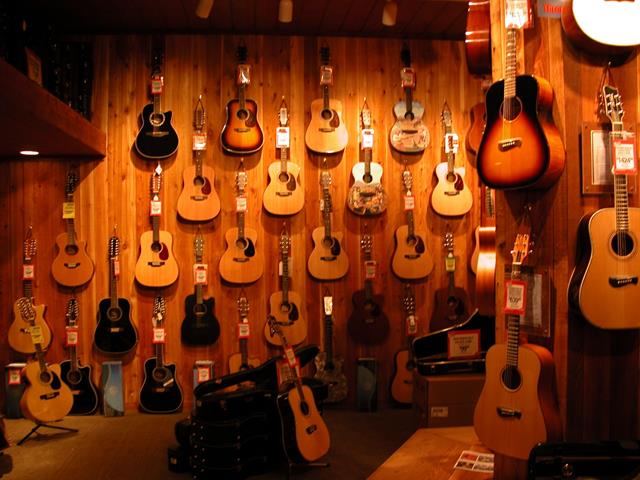At the beginning of my musical adventure, I was very skeptical about wah pedals. I was convinced that there was nothing special about them and that purchasing one would be a waste of money. Let me tell you that this attitude of mine had no real fundament and was based on the mere misconception that I had come up with myself. After a while, I came across an article, which mentioned how legendary musicians used wah pedals for creating their unique sound.
Suddenly I realized how silly it was of me to abstain from something totally different and utterly interesting. I rushed into the local store and got my first wah pedal. I discovered the world of Jimmy Page, Steve Vai and many renowned musicians. However, it took me some time to find a proper pedal. Finding the best wah pedal is not an easy task and can take a lot of time, but with proper research and all the needed information, this daunting process will seem like a piece of cake.
What’s The Best Wah Pedal
| Image | Amplifier Model | ||
|---|---|---|---|
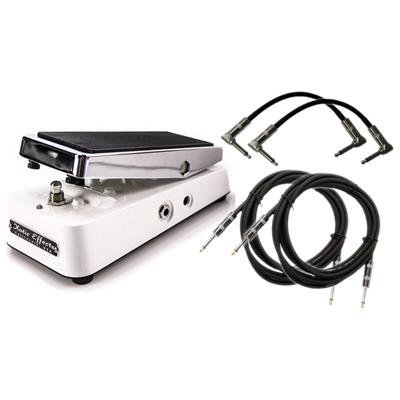 | Xotic Effects Wah XW-1 Guitar Effects Pedal |  (5 / 5) (5 / 5) | Check on Amazon |
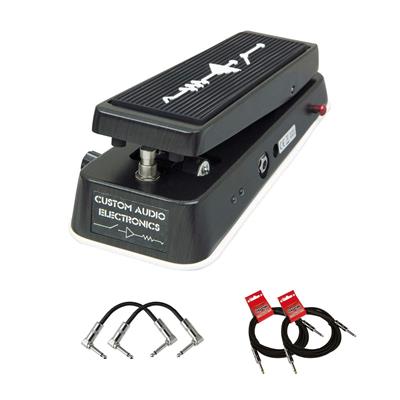 | MXR MC404 CAE Dual Inductor Wah Wah |  (5 / 5) (5 / 5) | Check on Amazon |
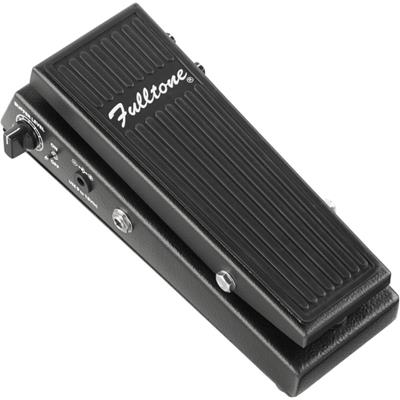 | Fulltone Clyde Deluxe Wah Pedal |  (4.9 / 5) (4.9 / 5) | Check on Amazon |
 | Dunlop 535Q Cry Baby Multi-Wah |  (4.9 / 5) (4.9 / 5) | Check on Amazon |
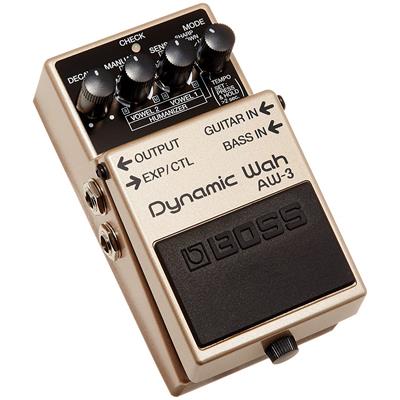 | Boss AW-3 Dynamic Wah |  (4.9 / 5) (4.9 / 5) | Check on Amazon |
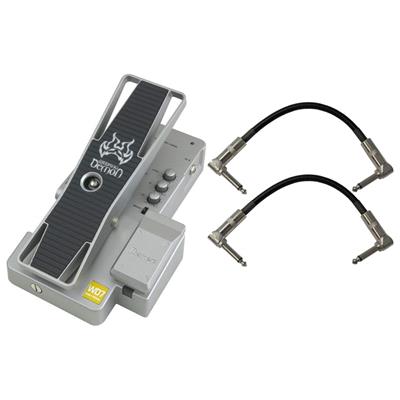 | Ibanez WD7 Weeping Demon Wah Pedal |  (4.8 / 5) (4.8 / 5) | Check on Amazon |
 | Morley VAI-2 Steve Vai Bad Horsie 2 Contour Wah |  (4.8 / 5) (4.8 / 5) | Check on Amazon |
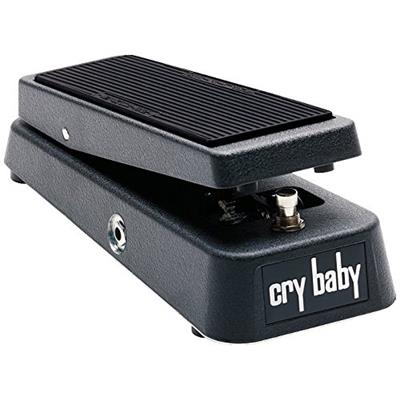 | Dunlop GCB95 Cry Baby Wah Guitar Effects Pedal |  (4.8 / 5) (4.8 / 5) | Check on Amazon |
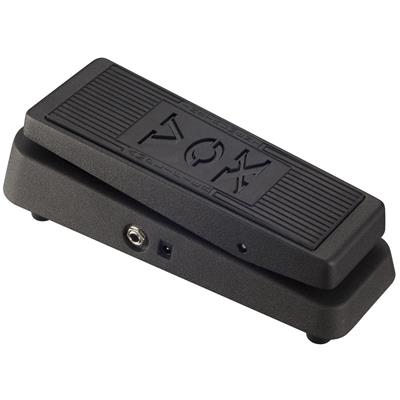 | Vox V845 Classic Wah Wah Pedal |  (4.8 / 5) (4.8 / 5) | Check on Amazon |
 | Rocktron Classic Wah Pedal |  (4.7 / 5) (4.7 / 5) | Check on Amazon |
Xotic Effects Wah XW-1 Guitar Effects Pedal

Xotic Effects Wah XW-1 offers unlimited amount of sounds on your pedal, with an abundance of flexibility, adjustability and versatility. It has a self-lubricating nylon bushing pivot, which makes its operation smooth and soundless. XW-1 offers a true bypass and prevents your sound signal from losing its frequency. It is equipped with Bias control, allowing you to adjust the firmness and add more output to the signal, as well as make the wah more defined (a.k.a. warm bias). The cold Bias produces transparent and smooth tones, touching up your music with vintage vibes. Wah Q Control lets you achieve vocal-like effects by modifying the amount of the wah in the sound signal. XW-1 has Treble and Bass controls, basically a two-band EQ, that lets you adjust the voicing for different playing styles.
Pros:
- Fuzz-friendly
- Extremely versatile
- Outstanding tone control
Cons:
- Big size
- Gain control is not easily accessible
MXR MC404 CAE Dual Inductor Wah Wah

MXR MC404 CAE Dual Inductor Wah Wah was created by Bob Bradshaw of Custom Audio Electronics along with the Cry Baby design team. This pedal is equipped with top-grade components and offers an array of versatility. Two Fasel inductors create distinct voices – Yellow Fasel offers a deep wah tone, while Red Fasel has low-to-mid resonance, resembling the classic Cry Baby tone. You can control everything with your foot, which makes it very flexible for live performances (including Boost/LineDriver controls). LED indicators on both sides of the pedal show you the status of the operation. What is more, MXR MC404 has an internal Q control, which adjusts the intensity of the wah effect and its gain. This pedal is definitely a must-have.
Pros:
- Easy to use
- Versatile
- Noise-free
- Adaptable
Cons:
- Hard to attach to the pedal board
- Size
Fulltone Clyde Deluxe Wah Pedal

The Fulltone Clyde Deluxe Wah Pedal features all the good features of its predecessors and offers even more updated ones. It has a 10-step variable input lever control, which screams precise sound to me. Clyde Deluxe Wah offers 3 selectable modes: the Jimi setting recreates 1960s Vox Voodoo Child tone, the Shaft knob lets you dial in superbad funk grooves, while Wacked control creates a more colorful treble. The Clyde Deluxe Wah has advanced features, such as a buffer (makes sure that it is compatible with other pedals), an adjustable treadle (lets you customize the resistance for your foot) and an adjustable trimmer (controlling the amount of gain and boost). This wah pedal takes some time to master, but once you learn how to use it, it will become a unique piece in your collection.
Pros:
- High quality
- Unique
- Responsive
- Great tone
Cons:
- Time-consuming
- The sweep is too big
Dunlop 535Q Cry Baby Multi-Wah

Dunlop 535Q Cry Baby is quite special, since Dunlop used the feedback of multiple guitarists in order to create this pedal. It allows you to shape your sound the way you want. This “Swiss Army knife of pedals” (the name chosen by Dunlop) has six-position Range Selector, which lets you select six different frequencies with their unique tonal characteristics. This feature adjusts the voice of your pedal to your guitar. The Variable Q control alters the pedal’s response and you can easily go from narrow and sharp to broad and subtle tones, emphasizing lower or high-end harmonics. The Boost switch produces an endless sustain and makes sure that the volume of the sound does not drop. 535Q Cry Baby eliminates the distortion and provides you with clean, yet powerful tones.
Pros:
- Provides full control over the tone
- Very durable
- Can work with every single note
Cons:
- Not for everyone
- Works with particular range of music
Boss AW-3 Dynamic Wah

The BOSS AW-3 Dynamic Wah pedal offers an abundance of auto-wah and dynamic wah effects. What makes this particular pedal special is its “Humanizer” effect, which replicates human vowels, making the wah effect more natural sounding. It is equipped with two input channels for guitar and bass, an output and an additional input for the expression pedal (for even more control). At a first glance, BOSS AW-3 seems a bit overwhelming and hard to use, but it is not that complicated. Decay control adjusts the speed of the pedal and monitors how the effect attaches onto your signal and how fast it wears off. Manual and Sense make your music sound like it was created by the human voice. Mode lets you apply different operation modes to your sound, making the pedal even more versatile. Surprisingly, BOSS AW-3 has a Tap Tempo, allowing you to control the speed of wah effect either manually or automatically.
Pros:
- Has manageable automatic settings
- Different from other pedals
- Sounds like a human
Cons:
- Adjusting the knobs is a bit time-consuming
- Not everybody’s cup of tea
Ibanez WD7 Weeping Demon Wah Pedal

Ibanez WD7 is called a Weeping Demon for a reason. It delivers all your shrieks, cries, wails, and seductive siren sounds perfectly with a touch of simple adjustments. Unlike other pedals, WD7 operates with “electro-optical” technology making your sound even more profound. It has Range switch, which alters the sound from low to high frequency response. Traditionally, level controls the overall output of the pedal, Q modifies its resonance frequency, while Lo adjusts the low-frequency cut-off. To ensure ease-of-access, WD7 is equipped with a lever that can push the pedal into Auto-Switch mode, tapping the footswitch generates wah effect automatically and it fades away after a short delay. The pedal also has two little knobs setting the limits of the frequency and the delay time in this mode. If you prefer controlling your pedal manually, you can easily use the Foot-Switch mode.
Pros:
- Reliable
- Powerful
- Wide range of features
Cons:
- Might be too big for some
- Sucks the battery
Morley VAI-2 Steve Vai Bad Horsie 2 Contour Wah

If you are a fan of Steve Vai music, then this pedal will make all your dreams come true. Bad Horsie 2 offers all the features of Bad Horsie Wah, but has some additional functions. It has a second Wah Mode (Contour Wah), which lets you adjust the tone (with Contour knob) and level (with Level knob). Bad Horsie has an Electro-Optical switching, allowing you to go into wah mode without activating the switch. In order to further enhance the silence of the pedal, Morley has added FET silent switching, meaning that your footswitch will not click when tapping. Additionally, VAI-2 offers a buffer circuit, which prevents the signal from getting overloaded and ensures a clean, strong and consistent output in Wah or Bypass mode. The size is a bit too big for the features it offers, but it can be connected to any instrument, making it more flexible.
Pros:
- You can craft your own tone
- Captures Steve Vai’s signature sounds
- Flexible
Cons:
- Size
Dunlop GCB95 Cry Baby Wah Guitar Effects Pedal

We cannot abstain from the fact that Cry Baby pedals do really stand out in the world of wah effects. GCB95 captures the sound of the original Cry Baby used by legends such as Jimi Hendrix and Eric Clapton, but it has all the up-to-date features. It is equipped with a traditional red Fasel inductor, with more concentrated high-end and more defined wah sound. Built like a tank, GCB95 consists of power supply circuit, an input buffer, an output stage and an active filter. Dunlop has improved a power jack, which is now universal and can be plugged in any power outlet. Plus, the bypass switch has been corrected by reducing the chance of losing the signal. GCB95 produces the funky wah-wah sounds that will awaken 1980s spirit in you.
Pros:
- Extremely durable
- Classic Cry Baby tones
- Lightweight and easy to carry
Cons:
- Does not have a LED indicator, which makes it hard to operate in dark venues
Vox V845 Classic Wah Wah Pedal

Vox was an innovator, who developed the first Wah Wah effect during 1960s, giving the guitarists the opportunity to create a muted-trumpet sound. The Vox V845 Classic Wah Wah is designed according to the specifications of the original Vox pedal and captures its legendary tones. The sturdy body of the pedal, as well as classy design makes it a great addition to your pedal board. Vox V845 produces the distinctive wah effect without any unpleasant harshness. It works really well with clean tones, adding some texture to them, but can be used with an overdriven channel as well. The affordability adds up to all the other features and turns Vox V845 into a real asset.
Pros:
- Amazing tone
- Classic vintage tone
- Works great for achieving 1960s tones
Cons:
- Not very versatile
- Not for everyone
Rocktron Classic Wah Pedal

The Rocktron Classic Wah has a sturdy design and tension adjustment, which adjusts the pedal right to your preferences. It has easy access battery compartment, which makes it a piece of cake to change batteries. It sounds best when placed in front of a signal chain. Rocktron Classic Wah is equipped with Rocker Footpedal, which contributes to creating the wah effect. It has ON/OFF Switch, which is located under the foot pedal and can be activated using some pressure while tapping. It has a LED indicator, that displays if the pedal is operating. Additionally, Rocktron Classic comes with Rocker Tension Adjustment – with a simple twist of the screw, you can control the actions of the pedal and tailor it to your taste. This pedal can produce classic warm and sweet tones of the wah effect.
Pros:
- Not noisy
- Great quality
- Vintage tones
- Easily accessible battery compartment
Cons:
- A bit heavy
History of Wah Pedals
November 1966 marks a significant date when the first wah pedal appeared on the market. It was created by Bradley J. Plunkett of Warwick Electronics Inc. (Thomas Organ Company). Shelled with a Vox Continental Organ volume pedal housing, it features the traditional mid-range circuit. Though it was the first wah pedal, the concept of the wah effect was not new. In the late 1950s Country guitar legend, Chet Atkins utilized similar device in the recordings “Hot Toddy” and “Slinkey”. He was not the only one though. Jazz guitarist Peter Van Wood had a revamped expression pedal that could produce a crying tone. Generally, usage of wah effect was becoming more and more ubiquitous at that time and musicians improvised in order to achieve desired sound effect.
You will notice that the creation of certain musical instruments and effects was related to fortuitous events and wah pedal was no exception. Warwick Electronics Inc. had agreements with multiple companies and was distributing Vox name and pedals in England as well. Due to the close cooperation with Thomas Organ Company, the majority of Vox products was produced by the latter. So the task of creating a new product line of solid state Vox amplifiers (a.k.a. Vox Amplifonic Orchestra) was assigned to them as well. During the process of creating this line, Thomas Organ Company made a decision to modify the British Vox amplifiers using the transistorized circuits (to save up some bucks). This led to the idea of utilizing transistors solid-state MRB (mid-range boost) circuits rather than pricy 3-position ones.
While testing these renovated circuits, the engineers noticed that some sort of sound effect was created. Technical consultant Bill Page wanted to try out the capabilities of the circuit by playing his saxophone via amplifier. In order to install the transistorized MRB potentiometer bread-boarded circuit, engineer John Glennon used a volume pedal housing and place the circuit inside. After these modifications, Page took his saxophone and started playing it, operating the pedal simultaneously. The CEO of Warwick Electronics Inc. listened to his music and observed the change in the sound caused by the pedal. The guitarist Del Casher thought that the prototype wah pedal would work better when used with an electric guitar. He revealed this idea to Joe Banaron. Nevertheless, the initial idea of propagating the product for wind instruments lingered for a long time. Banaron made a decision to promulgate the pedal with the name of Clyde McCoy (this decision was related to the Banaron’s view of the connection between the pedal and wind instruments) in order to increase the sales.
Casher and Plunkett continued to adjust different features of wah pedal in order to make it more suitable for electric guitar. Despite their effort, Vox did not want to propagate the product for electric guitars, giving the prototype wah pedal to Del Casher in order to perform at Vox conferences and record film soundtracks for Universal Pictures. In February 1967 the initial version of the wah pedal came out on the market, featuring Clyde McCoy as a cover.
Shortly after releasing the first Clyde McCoys, Thomas Organ received the patent for the pedal, but decided to change its name before releasing on the American Market. That was when McCoy was transformed into first Cry Baby, however Thomas Organ did not consider the risk related to selling the product without the trademark. This inadvertent behavior caused the abundance of Cry Baby copies on the market, which were delivered from all over the world (including Italy, where Vox was manufactured). What is more, wah pedals were rebranded for other companies as well. In the final end, the production of wah pedals was moved to certain states, while Italian versions still remained in the production and are considered as collectibles nowadays.
Something that was invented as a result of an accident quickly became popular among famous musicians and guitarists. Using wah-wah pedals for various styles and sounds became more and more widespread. These pedals saw the light of recordings in “Tales of Brave Ulysses” (1967) by Cream, featuring Eric Clapton on guitar. The pedal became Jimi Hendrix’s best friend, appearing in the record of “Burning of the Midnight Lamp”. But the song that screams wah pedal’s name is his “Voodoo Child”. Eric Clapton did not stop on “Tales of Brave Ulysses” and utilized the wah pedal multiple times, particularly in the albums Disraeli Gears (1967) and Wheels of Fire (1968) by Cream. In late 1968, Tommy James and the Shondells recorded “Crimson and Clover”, where they unleashed the true power of wah pedals. Other guitarists, such as Terry Kath of Chicago, Martin Barre of Jethro Tull were dedicated users of the effect as well. Of course we cannot skip Jimmy Page, who employed the wah pedal in Little Games by Yardbirds, and continued using it with Led Zeppelin as well, in particular in the songs such as “Custard Pie” and “Trampled Under Foot”. Songs by Black Sabbath also feature wah pedals, with Tony Lommi using it in “Black Sabbath”, “The Wizard” and “N.I.B.”, as well as “Electric Funeral” and “Supernaut”.
The history of wah pedals has always been inspiring to me. The creation of these unique sounding pedals was a result of a fortuitous event, which always makes me think about the unlimited possibilities that music offers. All you have to do is try, experiment and dive into this spectacular world of creativity. For me, discovering new sounds is the equivalent of discovering myself over and over again. This interminable process motivates me to create more, learn more and never stop trying. If you are anything like me, do not hesitate to risk, go out there, purchase a wah pedal, play with it as much as your soul will dictate and give way to the innovative spirit.
Conclusion
Now you have all the information about the best wah pedals on the market and have a general idea of how it all started. One last thing I would like to add is that the confusion accompanying the process of choosing the most suitable sound for you, fades away when you play the first chords with your favorite pedal. All that is left is the art of music, the freedom of playing whatever soothes your soul. Your existence transforms into living a meaningful life from the moment you start creating. And wah pedal will be there for you whenever you decide to step up your game.




